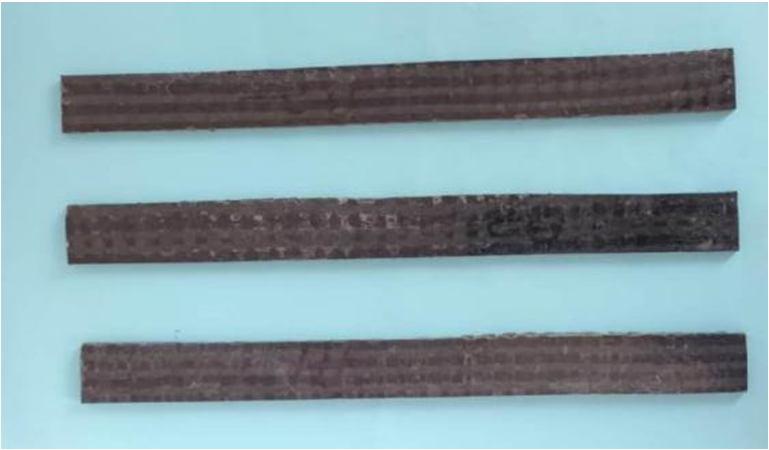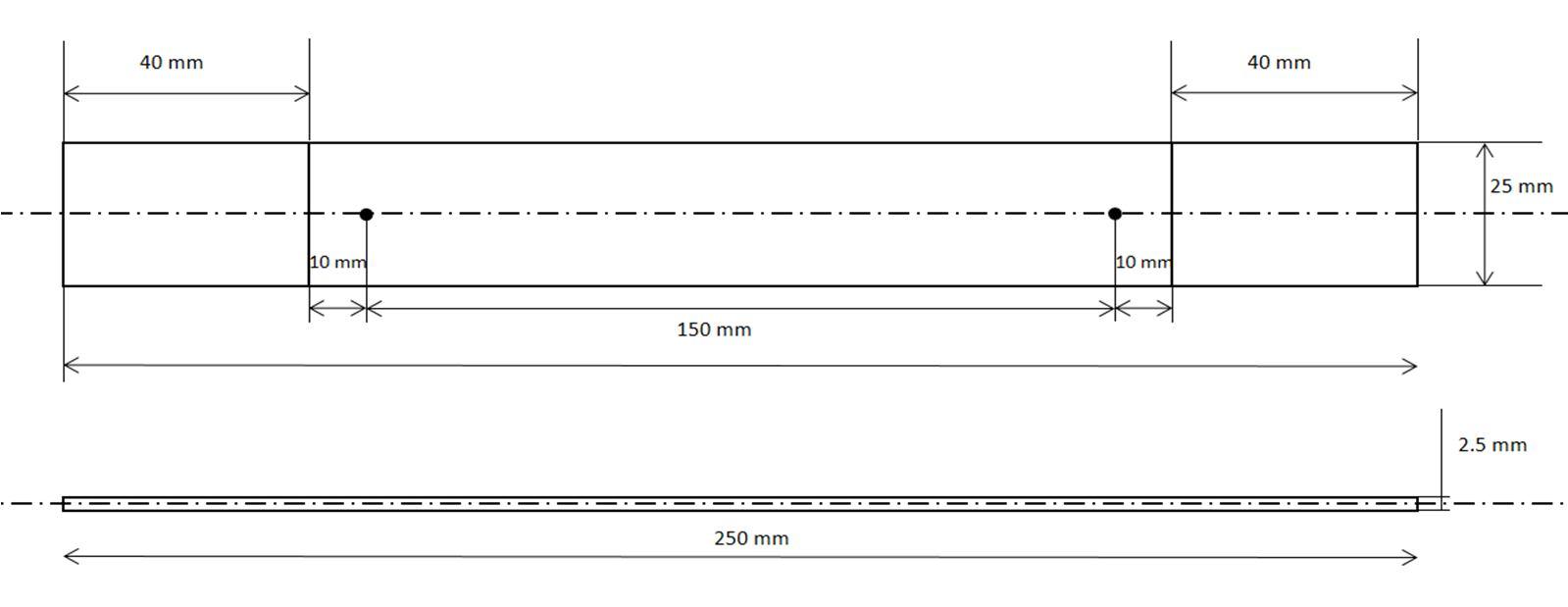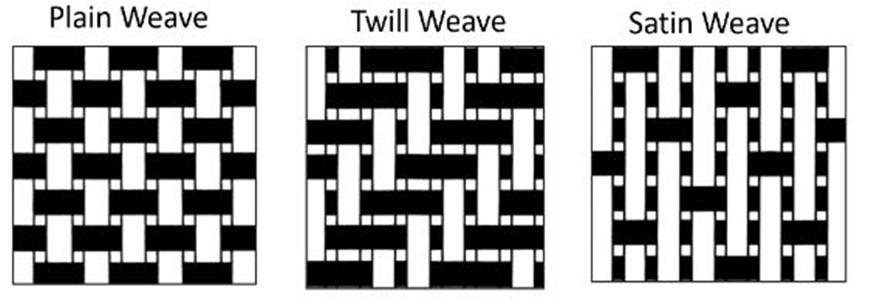
6 minute read
Experimental Testing On Carbon/Basalt Interwoven Fabric to Determine Its Mechanical Properties
from Experimental Testing On Carbon Basalt Interwoven Fabric to Determine Its Mechanical Properties
by IJRASET
Scholar, Department of Aeronautical Engineering, Annasaheb Dange College of Engineering & Technology

Advertisement
Abstract: In this research an attempt is made to analyse the mechanical properties for the plain weave hybrid composite of carbon and basalt fibers reinforced with polymer matrix. The interwoven fabric was made by hand-weaving method and various mechanical tests such as tensile, flexural, impact and hardness was carried out on the polymer matrix composite according to ASTM standards. Scanning Electron Microscope (SEM) is used to examine the morphology of fractured surface of hybrid composite during testing.
Keywords: Carbon, Basalt, Interwoven, Hand weaving, LY 556, Mechanical properties
I. INTRODUCTION
In the automotive, aerospace, and other industrial sectors, composite materials reinforced with woven, braided, and knitted fabrics are becoming more and more common for diverse structural applications. Variations of lay-up manufacturing, contact lamination, resin transfer moulding, vacuum/pressure bag moulding, autoclaving of fabric-based thermosetting prepregs, and compression/preform moulding of thermoplastic and thermosetting composites are a few examples of typical processing methods. Glass, aramid, carbon, and hybrid textiles, which are frequently employed as reinforcing materials, are made possible by textile preforming, which plays a significant role in composite technology. The key benefits of woven composites are their great processability and cost effectiveness, especially in lay-up manufacture of big structures. Woven fabrics are the most traditional fabrics constructed by weaving yarns together typically at 90° angles. They are of particular interest due to their mechanical performance compared to unidirectional laminate. Thus, that makes woven fabrics to balance properties throughout both the directions. This one layer could provide strength of multi layered composite with unidirectional fabric. In addition, making it light-weight and of less thickness. Another advantage of use of woven fabric in composite is that when composite is punctured fibers around the impact area gives strength independent of damage happened to other fibers [15]. In particular, the textile composite offer better dimensional stability over a large temperature, better impact resistance and tolerances, easier mold ability (due to flexibility).Hybrid composite has been developed to recondition the drawbacks of the single composite. The purpose of hybridization is to construct a new material which will retain the advantages of its constituents but not their disadvantages.
Carbon fiber composites are most widely used nowadays where light weight and high strength components are needed. It should also be noted that the cost of this material is very high compared to other fibers. Basalt fibers on the other hand, are ideally suited for the applications on required resistances against high temperatures, insulation properties. In addition, it has excellent durability and good water resistance and also it is inexpensive [6]. Due to their improved mechanical qualities, basalt fibres have attracted significantly more attention than other conventional fillers (glass fibres) as a source of fibrous reinforcement [16].
The research on creating hybrid composite materials out of carbon fibre mats and basalt fibre mats that are 40% reinforced with a 60% epoxy polymer matrix was presented by Razan A. Alshgari et al [1]. The outcomes demonstrated that the mechanical characteristics of the composite significantly changed when more carbon fibre layers were added.
Naveen et al [3]. looked at how the order of stacking affected the mechanical characteristics of a composite made of basalt and carbon fibre. The composites are created using a compression moulding technique with various ply laminate stacking sequences, with 30% fibre and 70% resin making up each specimen. The outcomes were significantly better for laminates made using carbon fibre as the top layer than with basalt fibre. The process for creating a unidirectional composite material out of basalt and carbon was introduced by Settipalli and Prasad [4]. The mechanical tests were conducted on specimens with various orientations, and the carbon basalt composite at 0 orientation angle produced the best results across the board.
ISSN: 2321-9653; IC Value: 45.98; SJ Impact Factor: 7.538

Volume 11 Issue III Mar 2023- Available at www.ijraset.com
Uzay et, al [5] explained the importance of hybrid composites to obtain desired mechanical and physical properties that cannot be provided from a single type of fiber reinforcement. The findings indicated that intraply hybrid composite laminate had a greater overall energy absorption capacity.
The majority of FRP composites are laminated uniformly, consisting of two or more unidirectional plies stacked on top of one another with the same or different fibre orientations. But if the ply itself is hybrid made by interweaving two different yarns, then the properties of FRP composite thus formed would provide better material properties in some aspects. In this research the different types of composites structures are compared and it takes testing on the standout structure. For this material is chosen with their advantages and disadvantages in their structural, thermal, electrical properties. Composite fabrication method is also needs to be chosen for particular composite based on requirement and resources available. Fabrication of new type of composite material is the focal objective of this particular study.
II. METHODOLOGY
A. Composite Preparation
The interwoven hybrid composite is constructed between carbon fiber and basalt fiber by hand-weaving the plain pattern. Poojan Fiber, Ahmedbad, provided the basalt fibre yarn, while Composites Tomorrow, Vadodara, provided the carbon fibre yarn. Comparison of properties between different materials is given in the Table I which shows the reason for selection of Carbon and Basalt.
The process of weaving is achieved by passing the weft 90̊ yarns over and underneath the warp 0̊ yarns [15]. Plain weave gives the tightly compacted structure with less complexity and manufacturing time than the Twill and Satin weave as shown in fig. 1. Previous studies conducted on hybridization of woven fibre composites mainly focused on stacking sequence of fabric materials, arranged in different layers to offer a distinct property in each ply, with less emphasis on achieving high strength and stiffness in a single ply. This leads to the development of interwoven fabric of carbon and basalt which can done by replacing alternate yarns (either warp and weft) with the yarns showing good strength and resisting many of this disadvantages. This will increase the uniformity of materials composition in both of the directions.
B. Matrix Selection
Different kinds of organic polymers make up the continuous phase in polymer matrix composites (PMC), whereas reinforced fibres make up the dispersed phase. In order to effectively transfer load between the fibres, the continuous phase acts as a matrix to hold the fibres together. The medium viscosity and chemical resistance of the thermosetting epoxy resin LY 556 make it a popular choice for use as a reinforcing material with hardener HY 951 at a given mix ratio of 100:10 at room temperature. The epoxy resin (LY556) 1kg & hardener (HY951) 100 grams was supplied by Herenba Instruments & Engineers, Chennai.
ISSN: 2321-9653; IC Value: 45.98; SJ Impact Factor: 7.538

Volume 11 Issue III Mar 2023- Available at www.ijraset.com
Table Ii
Specification of Epoxy and Hardener[24]
Properties Epoxy LY556 Hardener HY951
Visual appearance
Medium Viscosity, Colorless clear liquid. Brownish yellow colour liquid
Yield strength 9000-12000 MPa
Density at room temperature 1.13-1.16 gm/cc 0.946 gm/cc
C. Fabrication Method
The fabrication of the composite is done by hand lay-up approach. This manufacturing process requires manually applying individual layers or plies for reinforcement. It consists of thousands of fibres that have been resin-impregnated and bundled into tows woven together. The fiber and epoxy percentage are set to be 70% and 30% respectively. This fabric is layered with the epoxy carefully to reduce the bubble formation which can cause catastrophic defect and later on which can affect the whole composite. This process is continued up to four layers such that thickness of the specimen is about 3 mm as per the ASTM standards. The laminates are then allowed to cure in typical air conditions for 24hrs.
Table Iii
Specification of specimen prepared after fabrication
A. Microstructure Analysis
III. RESULTS
A concentrated electron beam is utilized by a Scanning Electron Microscope (SEM) to scan a sample's surface and produce a high resolution image. Images from SEM can provide details about a material's surface chemistry and topography. SEM has been carried out on the manufactured composite which shows the results in the following fig. 2.
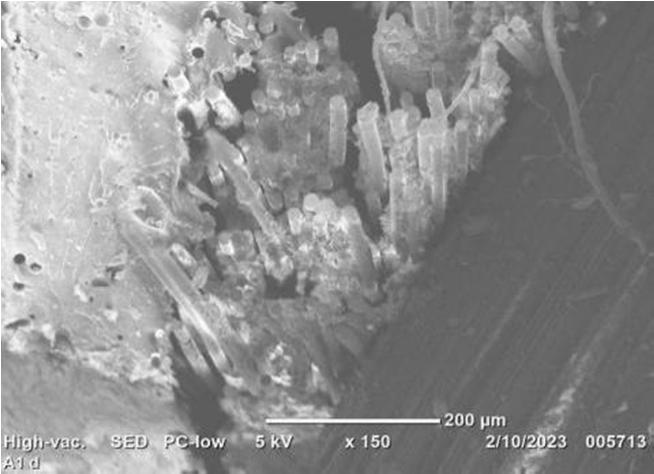

The composite morphology illustrated by the SEM micrograph in figures shows some indication of fibre pull-out and fibre debonding. Thus, signifying a comparatively weak bond between the fibres and matrix due to hand-weaving process. The SEM micrograph also revealed that the fibre bundles are not completely attached to the matrix, which indicates that the slightly higher viscosity epoxy resin penetrates the interwoven fabric. However, the bonding observed between both the fibers seems to be good.
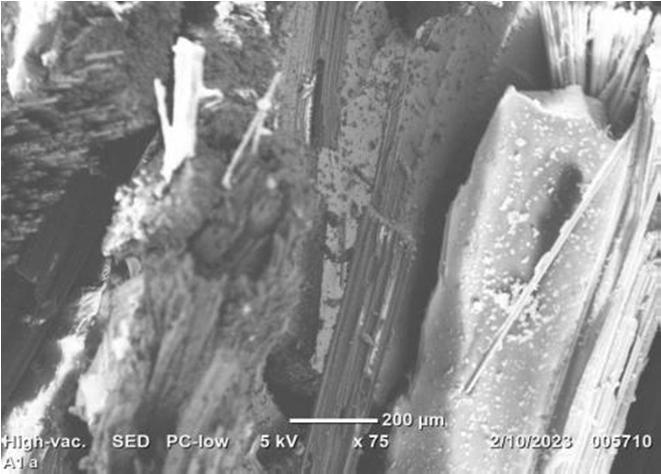
ISSN: 2321-9653; IC Value: 45.98; SJ Impact Factor: 7.538

Volume 11 Issue III Mar 2023- Available at www.ijraset.com
B. Tensile Strength
The ASTM D3039 test technique is the industry standard for determining a polymer matrix composite material's tensile characteristics. It is used to calculate the amount of force needed to break a polymer composite specimen as well as how far the specimen can stretch or elongate before breaking. A stress-strain diagram generated by tensile tests is presented in fig. 5. The results obtained in the tensile test carried out according to the ASTM D3039 (250x25mm) are depicted in the table IV

